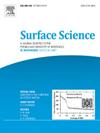Exploring the evolution of magnesium oxidation mechanisms by density functional theory
IF 1.8
4区 化学
Q3 CHEMISTRY, PHYSICAL
引用次数: 0
Abstract
Magnesium (Mg) is an abundant metal which has been used in aviation, medicine, hydrogen energy storage, etc. However, Mg can be rather reactive, and therefore an improved understanding of corrosion and oxidation mechanisms can enhance the efficiency of these processes to control and widen applications. The study presented here investigates the mechanisms of oxidation from the initial to full monolayer stages, on two low-index Mg surfaces, Mg(0001) and Mg. By analysing the valence electron changes during the oxidation process, we reveal a connection between oxidation and electron properties, suggesting that oxygen (O) atoms preferentially adsorb in the regions of charge accumulation on the surfaces. After the adsorption of a first O atom, the charge distribution on the surface changes, and following O atoms are attracted to neighbouring charge-rich regions. In addition, the oxidized Mg-O units form geometric structures initially different from the rocksalt structure commonly reported for a fully oxidized surface. In Mg(0001), the Mg-O unit structure transitions from a wurtzite type to hexagonal, while on Mg a more perfect Mg-O unit of wurtzite structure forms.

用密度泛函理论探讨镁氧化机理的演化
镁(Mg)是一种丰富的金属,在航空、医药、储氢等方面都有广泛的应用。然而,Mg可能是相当活跃的,因此,对腐蚀和氧化机制的更好理解可以提高这些过程的效率,以控制和扩大应用。本文研究了两个低指数Mg表面Mg(0001)和Mg(101¯0)从初始到完全单层阶段的氧化机制。通过分析氧化过程中价电子的变化,我们揭示了氧化与电子性质之间的联系,表明氧(O)原子优先吸附在表面电荷积聚区域。第一个O原子吸附后,表面的电荷分布发生变化,其后的O原子被吸引到邻近的富电荷区。此外,氧化Mg-O单元形成的几何结构最初与通常报道的完全氧化表面的岩盐结构不同。在Mg(0001)中,Mg- o单元结构从纤锌矿型转变为六边形,而在Mg(101¯0)中形成了更完美的Mg- o纤锌矿结构单元。
本文章由计算机程序翻译,如有差异,请以英文原文为准。
求助全文
约1分钟内获得全文
求助全文
来源期刊

Surface Science
化学-物理:凝聚态物理
CiteScore
3.30
自引率
5.30%
发文量
137
审稿时长
25 days
期刊介绍:
Surface Science is devoted to elucidating the fundamental aspects of chemistry and physics occurring at a wide range of surfaces and interfaces and to disseminating this knowledge fast. The journal welcomes a broad spectrum of topics, including but not limited to:
• model systems (e.g. in Ultra High Vacuum) under well-controlled reactive conditions
• nanoscale science and engineering, including manipulation of matter at the atomic/molecular scale and assembly phenomena
• reactivity of surfaces as related to various applied areas including heterogeneous catalysis, chemistry at electrified interfaces, and semiconductors functionalization
• phenomena at interfaces relevant to energy storage and conversion, and fuels production and utilization
• surface reactivity for environmental protection and pollution remediation
• interactions at surfaces of soft matter, including polymers and biomaterials.
Both experimental and theoretical work, including modeling, is within the scope of the journal. Work published in Surface Science reaches a wide readership, from chemistry and physics to biology and materials science and engineering, providing an excellent forum for cross-fertilization of ideas and broad dissemination of scientific discoveries.
 求助内容:
求助内容: 应助结果提醒方式:
应助结果提醒方式:


